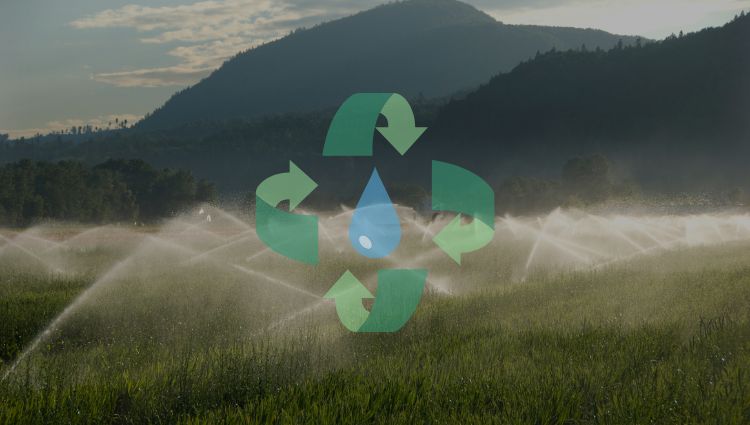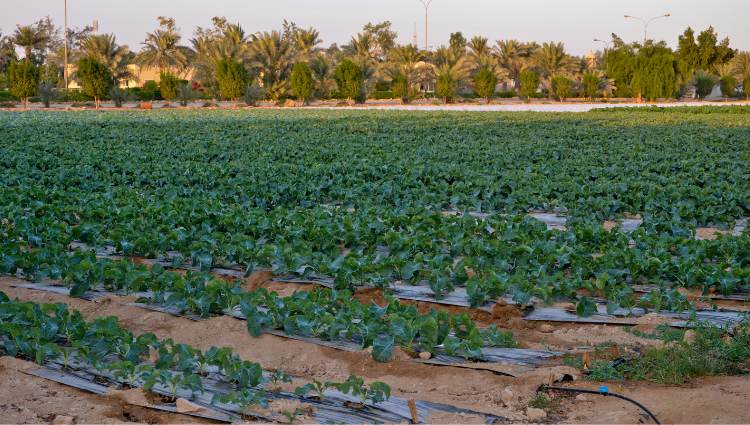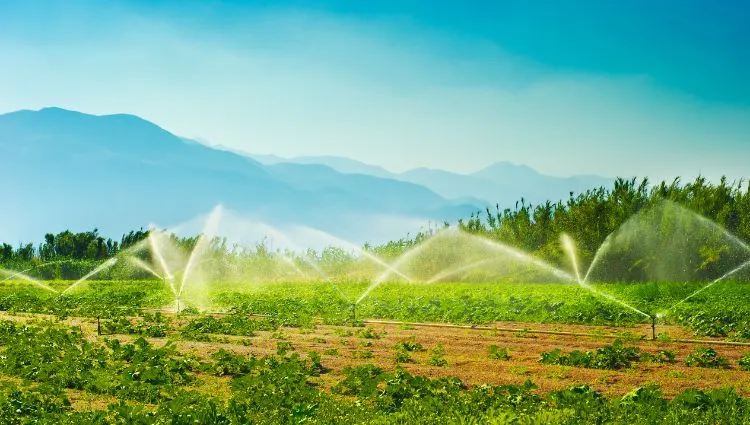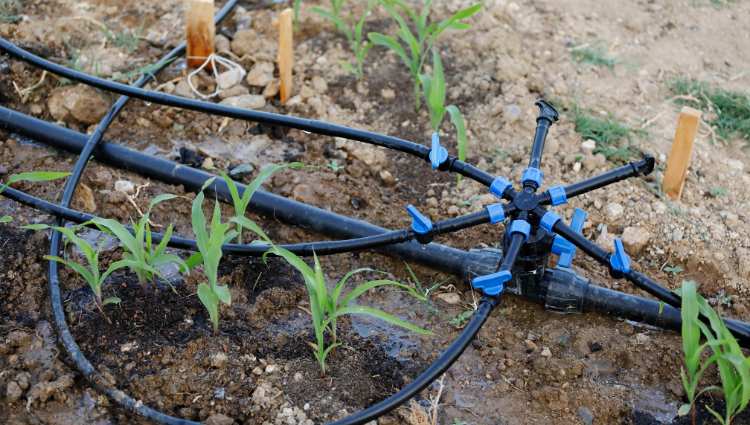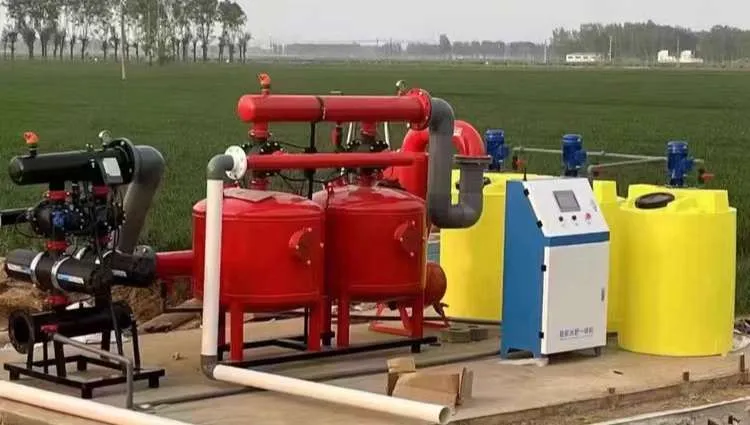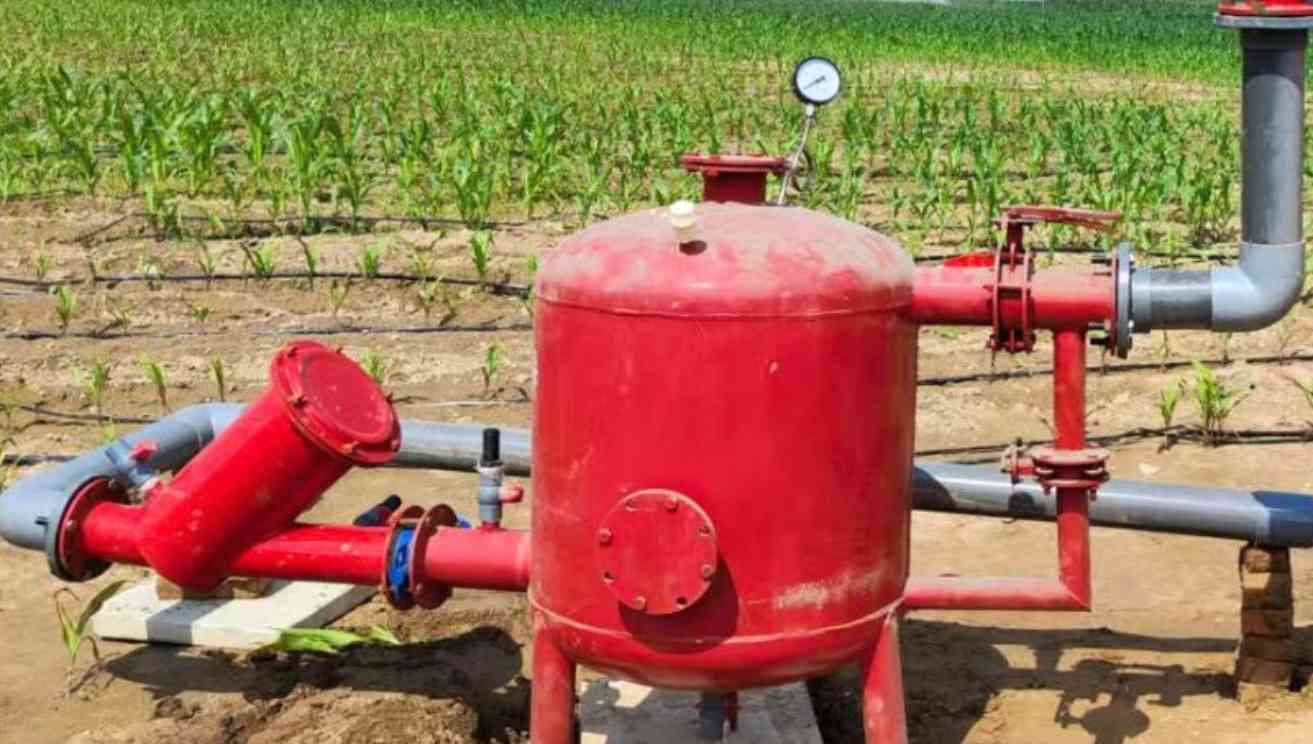सामग्रीको तालिका
What Is an Irrigation Pipe
In an irrigation system, many different components are used—such as sprinklers, micro sprayers, pumps, फिल्टरहरू, and pipes. All of them are important and each plays a different role. But if we ask: What is the most important and indispensable element in an irrigation system? The answer is likely just one—water. Because water is the essential life source that allows crops and plants to thrive and grow.
तैपनि, unless it comes from natural rainfall, large amounts of water cannot directly reach the crops on their own. That’s why irrigation technology exists—human-designed methods to deliver water to plants. त्यसैले, what role do pipes play in this system? Let’s use an analogy to help explain it.
The human body relies on blood to sustain life, and the circulation of blood requires blood vessels. Blood vessels extend throughout the entire body, enabling blood to reach every part. Similarly, irrigation pipes are like the blood vessels of an irrigation system. Thanks to them, water and nutrients can be smoothly delivered to every corner of the system.
अत, it is extremely valuable to fully understand irrigation pipes—from their features and types to the conditions for selecting them. Just as a doctor studies blood vessels with a scalpel to understand their structure, this guide will give you a detailed explanation of what irrigation pipes are all about.
Features of Irrigation Pipes
Pipes represent a broad category of products used in various fields such as construction, उद्योग धन्धा, and irrigation. Different applications place different demands on pipes, which gives rise to distinct characteristics for different types of pipes. In the field of irrigation, a qualified pipe must possess good pressure resistance, प्रतिरोधादारी प्रतिरोध, sealing performance, लचकता, stability, and aging resistance.
Let’s start with the working pressure of irrigation pipes. Based on their function, pipes can be divided into supply pipes and drainage pipes. Irrigation pipes typically fall under the category of supply pipes. The commonly used pressure ratings are PN10 and PN16, which mainly differ in wall thickness—thicker walls mean higher pressure resistance. For most standard irrigation systems, pipes rated at PN10 are already sufficient.
Pressure resistance is critical for irrigation pipes. If the water pressure during irrigation exceeds what the pipe can handle, even if the pipe doesn’t burst initially, long-term exposure to high pressure can eventually cause damage and lead to rupture. This not only disrupts the operation of the irrigation system but also results in wasted water resources. Furthermore, since pipes are usually laid outdoors, exposure to sun and wind accelerates the degradation of pipes with poor pressure resistance.
The second feature of irrigation pipes is corrosion resistance. Outdoor irrigation systems often face complex conditions. Water sources in different regions may be slightly acidic or alkaline, and the soil itself can have corrosive effects. थप रूपमा, pipes frequently carry fertilizers along with water, which can further corrode or damage the pipe material. अत, irrigation pipes must have a certain level of chemical corrosion resistance; otherwise, they won’t be able to reliably transport water over the long term.
The third feature is sealing performance. Irrigation pipes are connected using various fittings, such as elbows, tees, and couplings. If the connection between the pipe and fittings is not tight, issues like water leakage and seepage may occur, leading to water waste and reduced transmission efficiency. यसरी, the sealing between irrigation pipes and their fittings must not be overlooked.
अर्को, let’s discuss the flexibility and stability of irrigation pipes. At first glance, these may seem like opposing traits, but in reality, they are closely related. Flexibility is crucial because irrigation systems are often installed in complex and variable environments, such as mountainous or hilly terrain with uneven elevations. In such settings, rigid pipes may not adapt well. Flexible pipes, अर्कोतर्फ, can bend, fold, and change direction, making them especially valuable in these challenging landscapes.
So what about stability? This is also easy to understand. Using the same example of mountainous or hilly regions, while flexibility is needed for installation, such terrain also causes pressure fluctuations. These fluctuations can affect water delivery and lead to uneven distribution. अत, irrigation systems in these areas must be designed to ensure stable pressure and water supply. This can be achieved through devices that regulate pressure or by dividing the irrigation system into zones for better control.
As we can see, flexibility and stability may appear contradictory, but like the ancient Chinese philosophy of Yin and Yang, they are interconnected and mutually supportive.
The fifth feature of irrigation pipes is aging resistance. This is essential for all irrigation pipes because they are almost always installed outdoors. Although some pipes can be buried underground, many are laid on the surface and exposed directly to the elements—wind, rain, sunlight, heat, and cold. Prolonged exposure inevitably causes some degree of wear and degradation. High-quality, aging-resistant pipes can withstand these conditions and ensure the long-term and stable operation of the irrigation system.
Types of Irrigation Pipes
“Irrigation pipe” is a general term. Depending on the type, it can be further divided into many different categories. उदाहरण को लागी, by material, they can be classified as PVC pipe, चलिको पाइप, metal pipe, आदि. By function, there are also dripline, खपर्ब टेप, समतल नली राख्नुहोस्, rain hose, र यस्तै. तल, I will introduce each of these types one by one.
1. PVC Pipe

PVC pipe is a very common and popular plastic pipe mainly used in construction projects, उद्योग धन्धा, and irrigation. When used in irrigation, it is typically used as the main or secondary water supply pipe, vertical sprinkler pipe, or underground pipeline. It is widely favored in irrigation systems for the following advantages:
- Corrosion Resistance
PVC material has excellent corrosion resistance. In outdoor conditions like farmlands, corrosion is possible, but for PVC pipe, this is not a problem. Especially compared to metal pipes, it is not easily corroded or rusted.
- High Temperature Resistance
Pipes used in agricultural irrigation must meet high standards for temperature and UV resistance. PVC pipes fulfill these requirements, as they do not easily deform, become brittle, or crack under high temperatures, ensuring the long-term operation of the irrigation system.
- Stability
PVC pipes have excellent chemical stability and do not easily react with substances like oxidizers or reducers, which ensures the durability of the pipe.
- Durability
PVC pipe is a hard and rigid pipe with good pressure resistance and is not easily deformed. It works well even under medium to high pressure irrigation environments.
- Ease of Use
Compared to PE pipes, PVC pipes are lighter and can be nested like Russian dolls for packaging, making transportation and handling much easier. The connection method is also simple—usually just using special glue to bond two pipes together. During installation, if the ground is uneven or there are obstacles, PVC pipes can be paired with various fittings to address these issues.
- Smooth Inner Wall
The inner wall of PVC pipe is smooth and not prone to scaling, which improves water flow efficiency and ultimately enhances the overall efficiency of the irrigation system.
2. PE Pipe

PE pipe is also a very popular type of pipe, and especially in irrigation, it is even more favored than PVC pipe. Based on flexibility, it can be classified as either rigid or flexible. For instance, HDPE pipes are commonly used rigid pipes in systems with fixed water supply lines. There are also flexible PE pipes that offer more adaptability. Overall, since irrigation systems do not have the same stringent standards as industrial applications, PE pipes—affordable yet durable and pressure-resistant—are widely welcomed. Their features include:
- Corrosion Resistance
Like PVC pipes, PE pipes also offer excellent chemical corrosion resistance, capable of handling corrosion caused by fertilizers and varying soil acidity in irrigation environments.
- Low Temperature Resistance
This may not be important for irrigation systems inside greenhouses, but it is crucial in cold regions. Compared to PVC pipes, PE pipes maintain good flexibility and crack resistance even in freezing conditions.
- Pressure Resistance
In irrigation, PE pipes have sufficient pressure resistance. Larger irrigation areas mean higher water pressure, and PE pipes can serve as main pipelines, bearing the pressure. As mentioned earlier, irrigation systems typically don’t involve high pressure, so PE pipes are very cost-effective in this context.
- Long Lifespan
Many factors affect the lifespan of irrigation pipes, with weather being one of the most common—such as sun exposure, wind, and rain. Good-quality PE pipes (made from virgin materials, reputable brands) can still perform well under harsh conditions and require minimal maintenance or replacement.
3. Metal Pipe

Compared to PVC and PE pipes, metal pipes are significantly more durable and pressure-resistant, and they also have a longer lifespan.
In terms of pressure resistance, plastic pipes simply cannot compare to metal ones. Metal pipes can handle working pressures of several dozen kilograms. They are often installed near water pumps, where the pressure is highest due to proximity to the water source. अत, in high-pressure water delivery systems or areas with strong water flow, metal pipes and fittings are usually necessary.
As for lifespan, metal pipes also perform very well. With proper maintenance, they can last for decades—far surpassing non-metal pipes. We often see ancient bronze and iron artifacts in museums that are hundreds of years old yet still well-preserved. This demonstrates how long-lasting metal products can be!
तैपनि, metal pipes also have downsides, such as their tendency to rust. For long-term use, anti-rust treatment is required. A more significant issue is their high cost. How we view cost depends on the application. In some fields, cost is not the primary concern. But in irrigation, high-cost metal pipes are often overkill. PVC and PE plastic pipes are perfectly sufficient for irrigation needs and offer a much higher overall cost-performance ratio.
4. परेको बस्तु

Dripline is a cylindrical, thin-walled drip irrigation pipe, typically used as a branch or terminal water supply pipe in an irrigation network. Small holes and drippers are embedded along its walls, allowing water to slowly and evenly drip onto crops, providing them with a steady water supply.
Dripline is usually made of PE plastic and performs well in pressure resistance, प्रतिरोधादारी प्रतिरोध, र UV प्रतिरोध. It is a type of flexible pipe—soft and durable, able to bend and fold—making it highly versatile, especially in complex terrain.
These characteristics make it widely used in drip irrigation systems.
5. खपर्ब टेप

Drip tape is similar to dripline in many ways. It is also made of PE plastic and has good resistance to corrosion, pressure, and UV light. It is a flexible pipe, well-suited for adaptable installation. Its walls also feature drippers and small holes to deliver water or fertilizer to crops.
तैपनि, its appearance differs from dripline. When water is not flowing, it appears flat. It can be rolled or folded, providing excellent installation flexibility.
6. फ्ल्याट नली

Lay flat hose is a soft pipe that appears flat when water is not flowing. It is usually made of PVC or PE, with UV-resistant additives added during manufacturing. It features excellent resistance to corrosion, abrasion, tension, and cracking, and is lightweight and flexible.
Because it is flat and soft, it is also lightweight, easy to coil or fold, and convenient for storage, transportation, and installation. With a relatively large diameter, it is not used as a terminal pipe but is typically employed as a high-flow main or secondary water supply pipe.
7. Rain Hose

Rain hose is a flat micro-spray hose. Similar to drip tape, its wall contains small holes, but these are designed for spraying water. After the rain hose is laid out and water is supplied, the water sprays out of the small holes like rainfall, providing moisture to nearby crops and plants.
Rain hose is also made of PE material and performs well in corrosion and UV resistance. तैपनि, it is more cost-effective than drip tape or similar pipes, though its service life is shorter. It is very popular in small irrigation areas, settings where equipment is frequently updated, or in markets where price sensitivity is high.
8. Irrigation Micro Tube

Irrigation micro tube is an extremely narrow pipe. Common sizes include 3/5, 4/7, 8/11, र 9/12. उदाहरण को लागी, 4/7 means the pipe has an inner diameter of 4 mm and an outer diameter of 7 mm. It is available in both PVC and PE materials and is smooth, easy to coil, flexible, and resistant to freezing and cracking.
It belongs to the category of terminal micro water supply pipes. It is usually used together with micro-sprayers, drip arrows, ड्रिपरहरू, आदि. Once connected with irrigation micro tubes, these devices can continuously deliver water to plants.
Factors to Consider When Choosing Irrigation Pipes
Creating a suitable irrigation pipe network is not a simple task. It requires taking many factors into account, such as soil, crops, वातावरण, र यस्तै. Below are several key factors to consider:
- Soil Conditions
Soil has always played a very important role in irrigation systems. Not only does it affect crop growth, but it also determines how to choose the appropriate irrigation method. सामान्यतया बोल्दै, soil types can be classified as sandy soil, clay soil, saline-alkali soil, आदि. Different soil types require different irrigation methods, which naturally determines the type of irrigation pipe to be used.
Take sandy soil as an example. This type of soil has poor water retention and high infiltration rates, so pipes with a large flow capacity are needed to ensure an adequate water supply.
- Crop Requirements
The choice of irrigation pipes must also consider the type of crops being cultivated; there is no one-size-fits-all solution. For instance, for plants like fruit trees, using PE pipes in combination with irrigation micro tubes and micro-sprinklers can provide highly precise water delivery. This method is also suitable for greenhouse vegetables, as it delivers water directly to the plant roots. For ornamental potted plants, irrigation micro tubes with drip arrows can be used.
तैपनि, for large-scale and densely planted single crops, drip irrigation pipes are not suitable because the installation costs are too high. In this case, using PVC riser pipes with sprinklers for spray irrigation is a more appropriate option.
- Water Pressure and Flow Rate
This is also easy to understand. Water pressure and flow rate directly determine the type of pipe that should be used. For instance, in high-pressure and high-flow irrigation areas, soft pipes are not suitable. In such cases, rigid PVC pipes should be used for water delivery, and in areas with extremely high pressure, metal pipes may even be necessary. In areas with medium to low water pressure, PE pipes are a more cost-effective choice.
- Environment
Different environments naturally require pipes with different characteristics and qualities. उदाहरण को लागी, in hot regions, pipes with excellent UV resistance and high-temperature aging resistance should be selected. In cold regions, pipes with strong resistance to freezing and cracking are needed.
- Cost-effectiveness
Irrigation pipes should not be chosen blindly. A well-planned irrigation scheme should be developed in the early stages, and then the most suitable pipes can be selected while also considering cost. उदाहरण को लागी, in medium to low-pressure irrigation areas, plastic pipes are more suitable than metal ones, as they are fully capable of handling such working conditions and are much more cost-effective.
Another example is when you want to achieve spray irrigation but find the prices of conventional products like sprinklers too high—you can consider using a rain hose as a more affordable alternative.
How to Lay Irrigation Pipes
Before laying irrigation pipes, proper design is required. A well-designed and well-executed layout can significantly reduce costs while also extending the service life of the irrigation equipment. In the early stages, many factors need to be considered, such as the size of the irrigated area, the location and condition of the water source, crop spacing, and more.
सामान्यतया बोल्दै, the larger the irrigated area, the longer the pipes that need to be laid, and the higher the pipe pressure will be. अत, when selecting the main pipe, a larger diameter should be chosen. In most cases, we can first determine the pressure and flow rate of the water pump and then use that to decide on the pipe specifications. तैपनि, it’s also important to note that even if the inner wall of a long pipe is very smooth, there will still be resistance and energy loss during water transport. Sometimes, a better option may be to add more water pumps and divide the area into different irrigation zones, rather than simply extending the length of the pipe.
When it comes to pipe selection, the main types we use are PVC pipes and PE pipes. The advantages of PVC pipes include low cost, easy installation, and strong corrosion resistance. They are suitable for projects that require high water quality and do not involve high pipe pressure. On the other hand, PE pipes are known for their flexibility and resistance to low temperatures. They also have strong impact resistance, making them suitable for complex terrain.
थप रूपमा, we must consider the overall layout and efficiency of the irrigation piping system. Without affecting the final irrigation performance, the design should aim to avoid excessive crisscrossing of the pipe network and minimize the use of elbows, tees, and other fittings. This is because these elements increase water resistance and reduce irrigation efficiency.
Once the initial planning and design ideas are finalized, the pipe-laying process can begin. Let’s take drip tape as an example. Before installation, some tools need to be prepared, such as scissors, punching tools, irrigation mini valves, and pipe fittings.
प्रथम, lay out the main and sub-main pipes. Main pipes can use HDPE pipes or layflat hoses, which are used to connect the water source and guide water to the irrigation area. Then connect the sub-main pipes perpendicularly to the main pipe. अन्तमा, connect the drip tape to the sub-main pipe. During this process, care should be taken to avoid twisting or tangling the drip tape.
After the pipes are laid, use appropriately sized plugs, clamps, or strings to seal the ends, preventing water from leaking out and avoiding waste of water resources. अन्तमा, turn on the water flow to check whether the piping system is functioning properly. If the pipes work normally without any blockages or poor flow, then the pipe installation has been successfully completed.
Maintenance of Irrigation Pipes
To ensure the long-term and proper operation of irrigation pipes, it is necessary to carry out regular and essential maintenance. This includes routine inspections to check for issues such as leaks, cracks, deformation, or aging of the pipes. If any of these problems are found, timely repair or replacement of the pipes is required.
For a piping system, in addition to leakage, one of the most common issues is blockage, which is usually caused by the accumulation of debris inside the pipes. This is especially important in areas with poor water quality, where regular cleaning of the pipe interior is essential to prevent clogging.
यसबाहेक, data monitoring and management is also an effective way to avoid pipe-related problems. उदाहरण को लागी, regularly monitoring and recording the pressure and flow rate of the pipes, and comparing the results with historical data, allows for quick detection and response to any significant anomalies, helping to prevent issues from escalating.
Conclusion
Due to space limitations, this marks the end of our introduction to irrigation pipes. Through this article, we have mainly explored the characteristics and types of irrigation pipes, how to choose them, how to lay them out, and how to maintain them. We hope this information has been helpful to you.
अवश्य, irrigation piping is a broad topic that can be expanded into many related discussions. I will continue to share more knowledge about irrigation pipes in the Rainfaun blog. Please stay tuned for updates!
अन्तमा, I would like to introduce our company. Rainfaun is a manufacturer and supplier of irrigation products headquartered in Ningbo, चिनियां माटो. We work with customers from various countries around the world, producing and supplying the products they need. In terms of irrigation pipes, we offer PVC pipes and fittings, पीपी फिटिंग, BSP pipes and fittings, ड्रिपलाइन, खपर्ब टेप, layflat hose, irrigation micro tube, and more. अवश्य, we also supply related products such as स्प्रिंकलरहरू, micro-sprayers, drip irrigation valves, र drip fittings. You can learn more about our full product range through our website.
If you have any questions, feel free to यहाँ क्लिक गर्नुहोस् to consult us.
लेखिका: एलेन र माइकल
सम्पादक: माइवेएलको
सामग्री समीक्षाकर्ता: माइवेएलको

